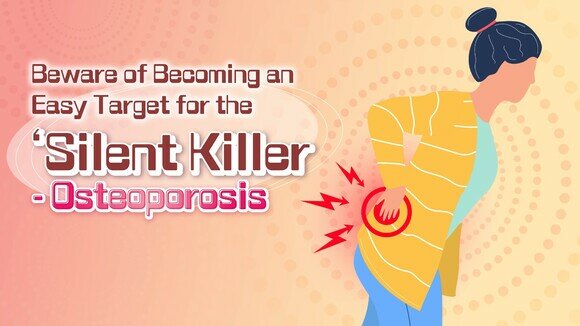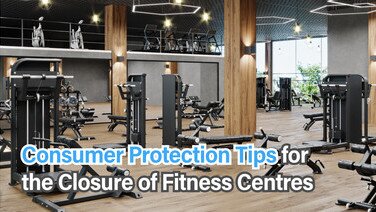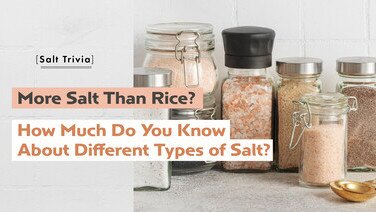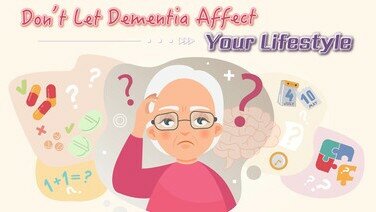Osteoporosis is a ‘silent killer’
People with osteoporosis will experience bone mass or bone density reduction, and bone structure deterioration, which will increase their risks of having fragility fractures. Even a minor trauma may lead to bone fractures; severe fractures may even be fatal. Osteoporosis has no obvious symptoms, and can only be detected with the help of a bone densitometer.
Menopausal women are more prone to develop osteoporosis
Bones, like other organs, require constant metabolism. Bone metabolism involves 2 types of cells: osteoblasts for bone formation; osteoclasts for bone resorption; and they work together to attain bone balance in the body. However, for women who are in their late 40s or with a reduction in oestrogen, this balance will be disturbed as their osteoclasts will become more active while their osteoblasts won’t increase accordingly, resulting in a gradual reduction in bone mass and bone density, and their bones will become more fragile.
Body parts that are more prone to fractures
For osteoporosis patients, fractures are mostly found in the wrist, lumbar spine and hip bones. Wrist and lumbar spine fractures are more common in people in their 50s and 60s, while hip fractures are more common in people over 60s. Among them, the consequences of hip fractures are more serious. As many elderly people with hip fractures may also have other chronic diseases at the same time, they are more prone to complications with fatal outcome during hospitalisation, surgery or rehabilitation. Even if they can survive the incidents, there is still a high chance that they may lose part of their mobilities or self-care abilities, making them unable to live independently or reliant on institutional care, which can seriously affect their daily life. Furthermore, there are other sequelae of lumbar spine fractures, including collapse of vertebrae and bending of back, resulting in hunchback postures and shortening of height, or back pain.
6 lifestyle habits that make you more likely to develop osteoporosis
The rate of bone loss is closely related to one’s lifestyle. Prolonged deficiency in calcium or vitamin D, excessive consumption of caffeinated beverages, excessive intake of sodium (salt), smoking, alcoholism, and lack of exercise are all factors that can make you more prone to develop osteoporosis.
Moreover, women are more likely to develop osteoporosis than men. Women during menopause experience increased bone loss due to changes in hormone levels. As such, women who have just stopped having periods are more prone to develop osteoporosis than men of the same age. In addition, the following people also belong to the high-risk group: elderly people; skinny people; people with family history of osteoporosis; people suffering from certain diseases, such as women suffering from premature menopause due to chemotherapy and radiotherapy, men with testosterone deficiency, people with endocrine disorders (such as hyperthyroidism), or those undergoing prolonged high-dose steroid treatments.
Early prevention of osteoporosis
Apart from the high-risk factors outlined above, in fact, the aforementioned bad habits can be redressed to greatly reduce the chance or alleviate the consequences of osteoporosis. Such measures include having sufficient sunlight exposure to produce vitamin D and calcium, having adequate intakes of calcium and vitamin D via a balanced diet, such as dairy products, soy products, dark green vegetables, and fish and seafood eaten with their bones and shells, etc.
The following people may need to consult their doctors about taking appropriate supplements: 1) people who are unable to absorb enough calcium from food source due to certain medical conditions, such as lactose intolerance, bowel diseases, irritable bowel syndrome, coeliac disease, or under long-term steroid treatments; and 2) people who suffer from vitamin D deficiencies due to working indoors for long hours or prolonged confinement in an institution.
As for exercises, weight training and balance exercises such as walking, jogging, and dancing, etc., are recommended. Tai chi is also a good balance exercise. Some studies have shown that it can help reduce the chance of falling and thus (indirectly) the risk of having fractures. In addition to exercising, spending more time hanging out and doing outdoor activities rather than sitting or lying down, is also good for your bones and overall health.
Furthermore, people should be more alert in their daily life to prevent falls, such as wearing non-slip footwear, avoiding drowsy drugs, improving vision, etc.
If you unfortunately suffer from osteoporosis, you should consult your doctor and consider whether to take medication in order to reduce the risk of having fragility fractures.
For further details on this subject, please refer to the article ‘Tips on Menopause Eat the Right Food to Prevent Osteoporosis’ (Chinese version only) in Issue #496 of CHOICE Magazine.
Extended reading: How to select non-slip slippers
Choosing the right pair of slippers can effectively reduce the chance of slipping at home, thereby reducing the risk of developing fractures. What kind of slippers are good in non-slip performance? For more information, please click here to read the article ‘Beware of Slippery Floors 5 Things to Consider when Selecting Slippers’ (Chinese version only).









![[Handwashing Cold Knowledge] Debunking 4 common handwashing myths](/f/guide_detail/409326/376c212/43_4%E5%80%8B%E6%B4%97%E6%89%8B%E5%B8%B8%E8%A6%8B%E8%BF%B7%E6%80%9D_Eng.jpg)


